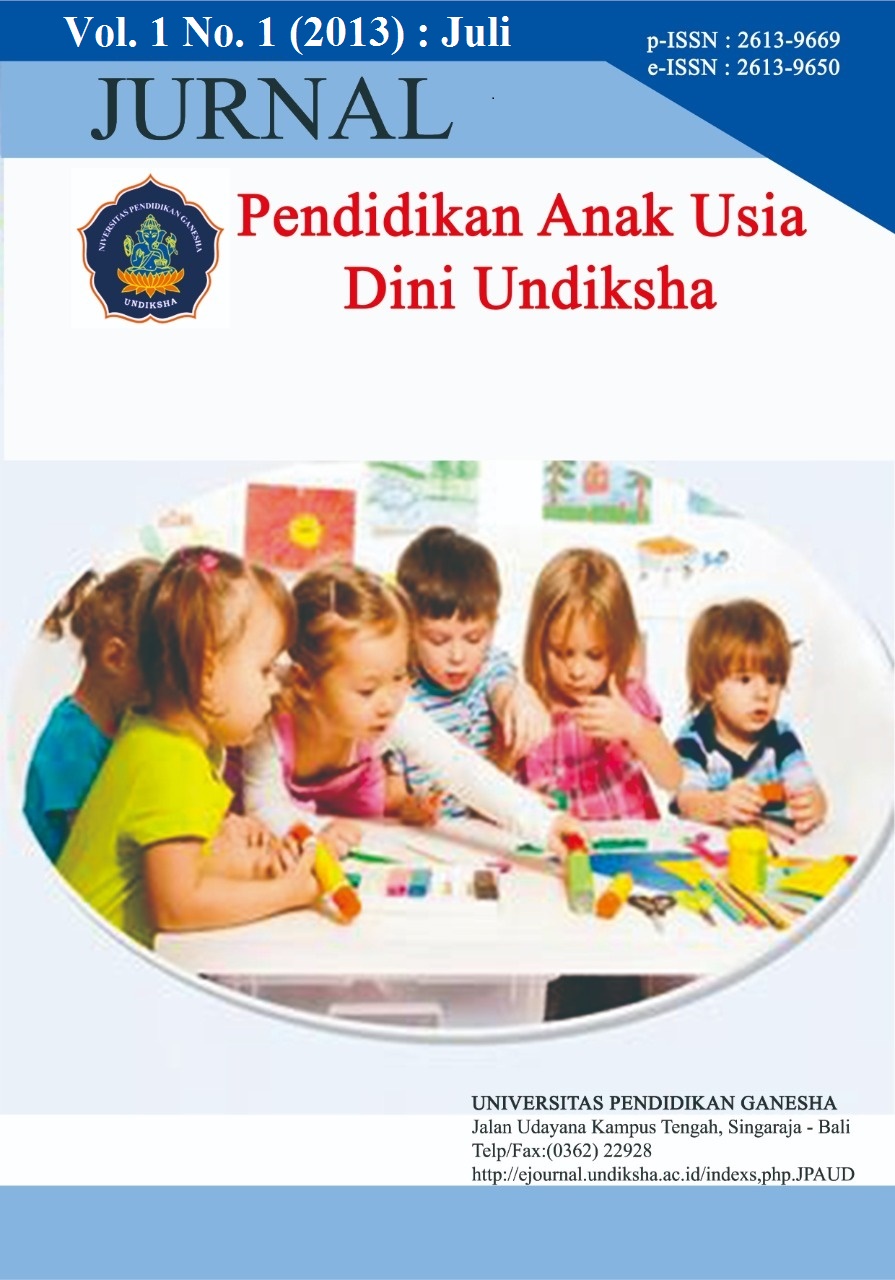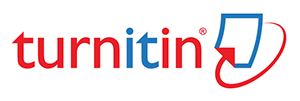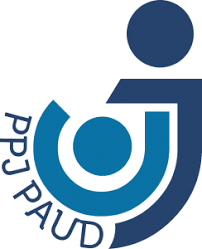PENERAPAN METODE BERMAIN PERAN UNTUK MENINGKATKAN KEMAMPUAN BERBAHASA ANAK DENGAN MENGGUNAKAN MEDIA PERALATAN KEDOKTERAN DI TK AISYIYAH SINGARAJA
DOI:
https://doi.org/10.23887/paud.v1i1.1449Abstract
Penelitian ini bertujuan untuk mengetahui peningkatan kemampuan berbahasa pada anak kelompok B semester II di TK Aisyiyah Singaraja Tahun Pelajaran 2012/2013. Penelitian yang dilakukan adalah Penelitian Tindakan Kelas (Classroom Action Research) yang dilaksanakan dalam dua siklus. Setiap siklus terdiri dari tahap perencanaan tindakan, pelaksanaan tindakan, observasi/evaluasi dan refleksi. Subjek penelitian ini adalah 24 anak kelompok B TK Aisyiyah tahun pelajaran 2012/2013. Data mengenai kemampuan berbahasa dalam penelitian ini dikumpulkan menggunakan metode wawancara dan data cukup dianalisis secara deskriptif kuantitatif. Hasil penelitian menunjukkan bahwa bermain peran dengan menggunakan media peralatan kedokteran dapat meningkatkan kemampuan berbahasa anak kelompok B TK Aisyiyah tahun pelajaran 2012/2013. Hal ini dapat dilihat dari adanya peningkatan rerata kemampuan berbahasa anak pada siklus I ke siklus II. Pada siklus I rerata kemampuan berbahasa anak adalah 44,45% yang berada pada kategori rendah sedangkan pada siklus II rerata kreativitas menjadi 94,7% tergolong pada kategori sangat tinggi. Jadi terjadi peningkatan kreativitas sebesar 50,25%. Sehingga dapat disimpulkan bahwa kemampuan berbahasa pada anak kelompok B semester II tahun pelajaran 2012/2013 di TK Aisyiyah meningkat melalui metode bermain peran dengan menggunakan media peralatan kedokteran.
Kata-kata kunci: kemampuan berbahasa, metode bermain peran, permainan peralatan kedokteran
Abstract
This study aims to determine the increase in language ability in children in group B the second semester of kindergarten Aisyiyah Singaraja Academic Year 2012/2013. Research is Classroom Action Research were conducted in two cycles. Each cycle consists of stage of action planning. Action, observation / evaluation and reflection. The study subjects were 24 children in group B Aisyiyah kindergarten school year 2012/2013. Data on language ability in the study conducted using interviews. The data have been obtained and analyzed using Quantitative Descriptive analyzes. The result showed that the media play a role by using medical equipment to improve the language ability of children in group B Aisyiyah kindergarten school year 2012/2013. It can be seen from the increace in the average child’s language ability in the first cycle to the second cycle. In the first cycle, the average child’s language ability is 44,45% which is in the low category, while the second cycle of the average child’s language abilities to 94,7% belong to the very high category. So there was an increase of 50,25% proficiency. Thus it can be concluded that the child’s language ability in group B the second semester of academic year 2012/2013 in Kindergarten Aisyiyah increased through role play method using the medium of medical equipment.
Key words: language ability, role play method , medical toys
Downloads
Published
How to Cite
Issue
Section
License
Authors who publish with the Jurnal Pendidikan Anak Usia Dini Undiksha agree to the following terms:
- Authors retain copyright and grant the journal the right of first publication with the work simultaneously licensed under a Creative Commons Attribution License (CC BY-SA 4.0) that allows others to share the work with an acknowledgment of the work's authorship and initial publication in this journal.
- Authors are able to enter into separate, additional contractual arrangements for the non-exclusive distribution of the journal's published version of the work (e.g., post it to an institutional repository or publish it in a book), with an acknowledgment of its initial publication in this journal.
- Authors are permitted and encouraged to post their work online (e.g., in institutional repositories or on their website) prior to and during the submission process, as it can lead to productive exchanges, as well as earlier and greater citation of published work. (See The Effect of Open Access)











